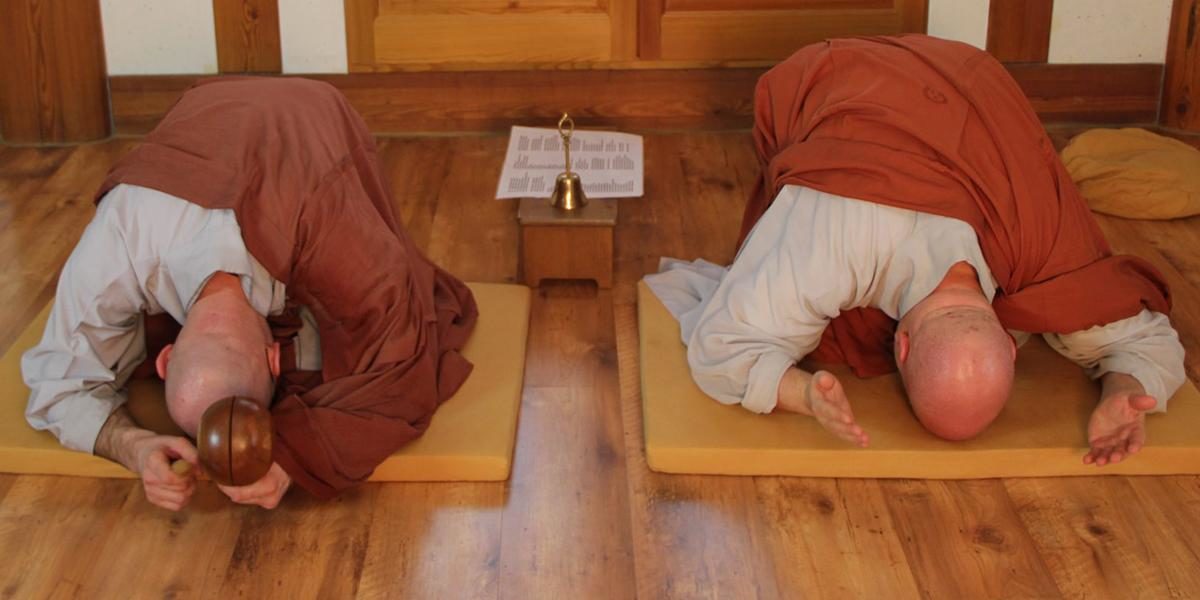Prostrations
‘„When we bow, we don’t bow to anyone outside of ourselves.
Bowing means our small ‘I’ is bowing to our Big ‘I’. That’s all.’ ”
Zen Master Seung Sahn
Buddhist people greet each other by keeping their palms together in front of their heart (hapjang) and doing a half bow. This action is also done towards monastics, Buddha statues and other representations of the Triple Gem.
Placing our palms together in this way is a sign of respect and a symbol of the union of wisdom and compassion.
Acording to Buddha’s teachings, all suffering is derived from a belief in and attachment to one’s self. We as human beings believe that ‘„I” ‘ exists and therefore we work hard to make this ‘self’. Bowing is a way to put down our belief and attachment to the self by physically lowering our bodies and humbling our selfish egos.
When we enter a temple, a Dharma room or meet a monastic, three prostration are standard but one bow can also be acceptable. We should bow with respect and an understanding that all being and things have the same true nature. In this way, all beings are worthy objects of respect.
Full Prostration
We begin full prostrations by placing our palms together in front of our heart (hapjang).
When we go down, we breath out. Once we reach the ground we should make sure our five points are touching the floor: forehead, two hands and two knees. Our feet should be crossed on the floor (right foot over left foot). When we come up, we should breath in and stand straight. When doing prostrations, we should keep our focus on our tantien (the point under one’s navel). The last bow of a given set is done slightly differently . This last bow is a promise to continue our practice and a wish that all beings may profit from our practice and wish that all beings may profit from our practice.
Typically, bowing is done in sets of 108 (108, 216, 324, etc.)
While bowing, we can focus in various way:
- Only to breath in and out.
- Through the use of a mantra (Kwanseum Bosal, Seokamuni Bul, Amita Bul, Om Mani Padme Hum).
Often times bowing – (like the daily 108 bows) is – accompanies other practices like prayer and mantra practice.
Bowing is also an essential part of chanting ceremonies. During chanting we bow to pay respect and take refuge in the Triple Jewel.
In zen we can bow to practice clear mind that sees beyond the bower and the bowing, to repent our bad karma and attain humble mind and cultive deep respect for all beings.
All what you have to do: bow with a sincere heart and give up your self.



